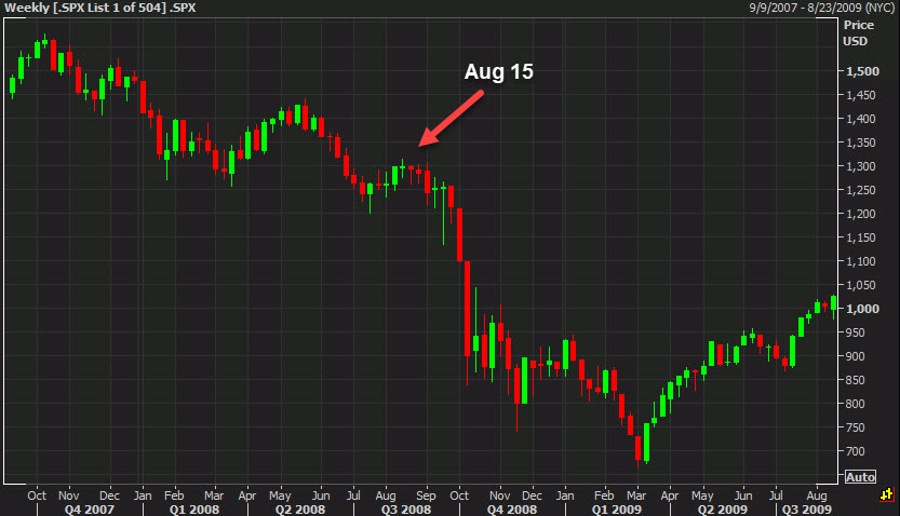I clearly remember this time of year 15 years ago. It was 5 months after the collapse of Bear Sterns and markets were full of complacency. The Fed was at 2.00% and offering no signals about cutting rates, despite an average of 66K job losses over the past six months.
Markets were complacent.
The August 5, 2008 FOMC statement read like this:
Economic activity expanded in the second quarter, partly reflecting
growth in consumer spending and exports. However, labor markets have
softened further and financial markets remain under considerable stress.
Tight credit conditions, the ongoing housing contraction, and elevated
energy prices are likely to weigh on economic growth over the next few
quarters. Over time, the substantial easing of monetary policy, combined
with ongoing measures to foster market liquidity, should help to
promote moderate economic growth.
Inflation has been high, spurred by the earlier increases in the
prices of energy and some other commodities, and some indicators of
inflation expectations have been elevated. The Committee expects
inflation to moderate later this year and next year, but the inflation
outlook remains highly uncertain.
Although downside risks to growth remain, the upside risks to
inflation are also of significant concern to the Committee. The
Committee will continue to monitor economic and financial developments
and will act as needed to promote sustainable economic growth and price
stability.
The transcript of the meeting was damning, with the Fed’s Dudley offering this:
The trajectory of housing in all of this is going to be hugely important. One thing that may signal
the next phase, maybe the beginning of the end, is when people really do get a sign that the
housing sector is starting to bottom, probably first in activity and then in price. Once that
happens, the huge risk premium embedded in some of these mortgage-related assets will then
collapse
Seven weeks later, it wasn’t the risk premiums that collapsed but the banks.
I worry that similar dynamics are beginning to unfold in China. The call from the PBOC’s Cai Fang last week is starting to look like a desperate Quixotic attempt to save the day but a commentary published the Party’s Study Times this week closed the door on that possibility and now officials are offering up ham-handed proposals like stopping equity market selling and cutting trading fees.
Today we got the bankruptcy of Evergrande, which isn’t a surprise but the headline that worried me most this week (among many) was that China trust company Zhongzhi is planning a debt restructuring. That shows the pain in real estate is spreading to the financial sector, which is what took place in the US financial crisis.
There was window for US policymakers to change the course of history but the Fed didn’t cut enough and there was a philosophical bent against saving the bank in Washington.
In Beijing, a Xi speech was released this week calling for patience and a long view on balancing progress and stability.
“We cannot be ambitious and unrealistic, but we cannot simply follow the beaten path,” he said. “We should be patient [with a historical perspective] and move forward in a steadfast manner.”
He criticized western economies for exploitation.
Xi Jinping sleeping (AI image)
To me, that doesn’t sound like Xi or the top policymakers in Beijing understand what’s happening. Pessimism is embedding itself in the Chinese economy.
There is clearly yuan intervention ongoing now and that may clear the way for rate cuts but there’s no economic bazooka coming. I fear it will end in something like the US financial crisis.
Of course, China is far more opaque and China has many levers it could pull but I’m finding it tough to remain optimistic about China, and the world economy by extension.
Shanghai Comp daily
